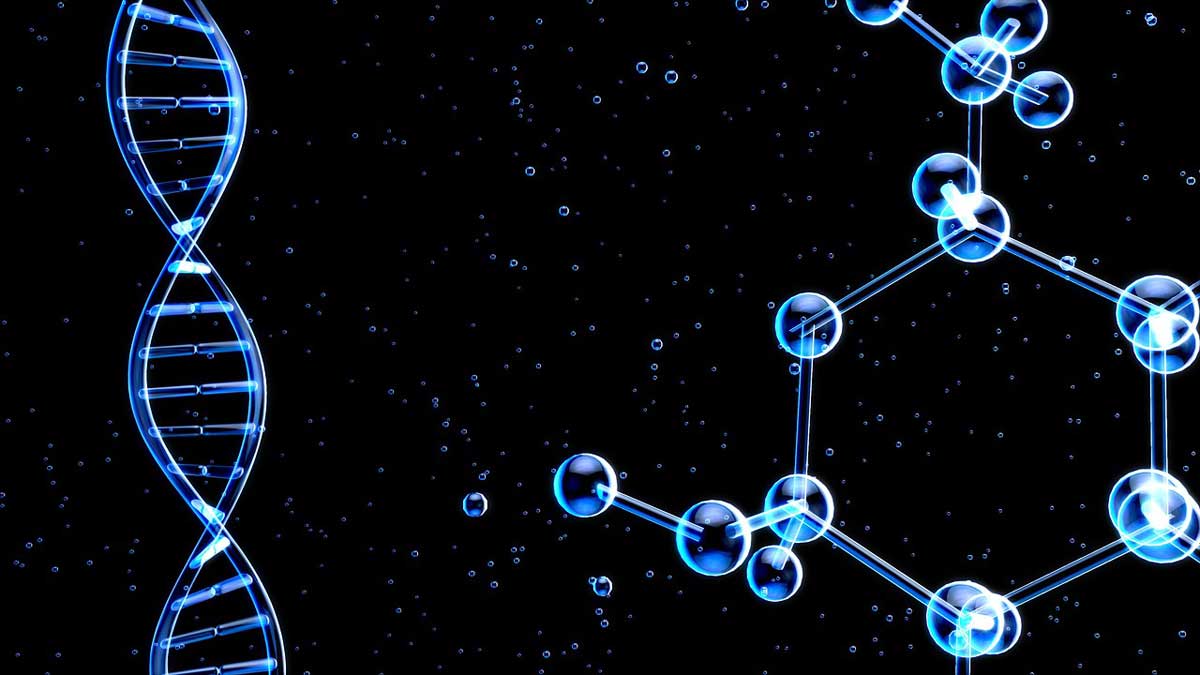
A list of scientists associated with Edinburgh
Each person on this list of Edinburgh scientists has lived, worked or been associated, in some way, with Scotland’s capital city.
How this list of Edinburgh scientists is laid out
In previous centuries branches of science were less well defined and individuals were often active in a number of scientific disciplines.
With this in mind, entries are listed in these broad scientific categories:
- Physical science
- Biological & life science
- Formal science
- Social science
Further information
Many of the entries have links to authoritative sources of further information. There are also additional sources at the bottom of the page.
My hope is that readers will want to spend time further researching these remarkable people and their contributions to the city of Edinburgh and beyond.
Edinburgh scientists: physical science
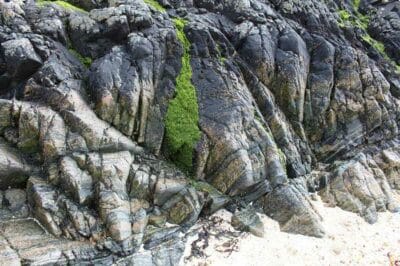
1) James Hutton (1726-1797) geologist
James Hutton, a student at the University of Edinburgh, was the author of the Theory of the Earth.
Born in Edinburgh, he studied medicine and chemistry at the University of Edinburgh.
He was considered the father of modern geology, a key figure of the Scottish Enlightenment and an inspiration to Charles Darwin who also studied at the University of Edinburgh.
“… We find no vestige of a beginning -no prospect of an end”
James Hutton
►More information about James Hutton from the National Library of Scotland
2) Joseph Black (1728-1799) chemist, physicist
French-born Joseph Black first entered the University of Glasgow in 1744 to study medicine. He subsequently became an assistant to William Cullen who taught him chemistry (see Cullen entry below).
Black graduated MD ten years later after finishing his studies at the University of Edinburgh.
The University appointed him Professor of Chemistry in 1766. He is credited with the discovery of specific and latent heat.
Following his death, he was buried in Greyfriars Kirkyard.
►The official University of Edinburgh website says more about Joseph Black.
3) Alexander Crum Brown (1838-1922) organic chemist
Alexander Crum Brown was born in Edinburgh. In 1854, he joined an arts course at the University of Edinburgh, while also attending chemistry lectures.
He graduated MA in 1858. In another change of direction, he studied medicine at Edinburgh, graduating MD in 1861.
Impressively he also studied chemistry at the Universities of London and Leipzig.
Although it’s impossible to condense his life’s work into a few sentences he was particularly known for his “graphical theory to represent the linking of atoms in molecules.”
► More information about Crum Brown from the University of Edinburgh School of Chemistry
4) Robert Cockburn Mossman (1870-1901) meteorologist
Robert Mossman was born in Edinburgh and educated locally. His interest in meteorology began with his observations of Edinburgh’s weather.
Without formal training, Mossman worked at the Ben Nevis Observatory as an assistant in 1895.
He joined William Spiers Bruce (see entry below) on the Scottish National Antarctic Expedition 1902-1904 and manned a weather station in the South Orkney Islands in the Southern Ocean.
In 1891, he was elected a Fellow of the Royal Society of Edinburgh (RSE). In 1905, the Royal Scottish Geographical Society awarded him a gold medal, its highest honour.
Mossman died in Argentina and leaves a large corpus of work including his early Edinburgh weather data.
► For more about Mossman, click the Royal Society of Edinburgh link at the bottom of this page and search for information.
5) Thomas Brisbane (1773-1860) astronomer, administrator
Thomas Macdougall Brisbane was born in Largs and studied mathematics and astronomy at the University of Edinburgh. He joined the British Army in 1789 and served in a number of overseas countries.
It was the Duke of Wellington who, recognising his ability, advised that he should serve in Australia.
Today, Brisbane, the capital of the state of Queensland, bears his name as do a number of places in the town of his birth.
Despite his success as a soldier and administrator, his first love was astronomy, a skill he used to observe the southern hemisphere stars.
Returning to Scotland, the Royal Society of Edinburgh elected him President of the organisation. He succeeded Sir Walter Scott.
►Discover more about Thomas Brisbane by clicking the University of Edinburgh Alumni link at the bottom of this page and searching for information.
6) William Spiers Bruce (1867-1921) oceanographer, naturalist
Bruce, born in London, eventually found his way to the University of Edinburgh to study medicine.
He later lectured in geography at what is now Heriot-Watt University. Although a medical career was put on hold he did further his interest in oceanography in the University’s laboratories.
Like Robert Mossman before him, he also worked at the Ben Nevis meteorological observatory.
Between 1895 and 1899, he played an important part in a number of Arctic expeditions famously leading Scotland’s only Antarctic expedition in 1902.
►For further information on William Spiers Bruce see the link to the University of Edinburgh website notable Alumni in History at the end of this page.
7) George Goudie Chisholm (1867-1930) geographer
George Chisholm was born in Edinburgh and schooled locally. In 1870 he graduated MA from the University of Edinburgh. In 1883 he gained a BSc in Natural Sciences also in Edinburgh.
Some years later he became the first lecturer (1908) in Geography at the University of Edinburgh. He became a Fellow of the Royal Society of Edinburgh in 1924.
►Search the Royal Society of Edinburgh website (link at the bottom of the page) for more information about Watson.
In addition, the Papers of George Goudie Chisholm are held at Edinburgh University Library Special Collections Repository.
8) Alexander Rose (1781-1860) geologist
We do know that Alexander Rose grew up in Edinburgh although he may not have been born in the city. Like his father, he became a wood and ivory turner although he was later listed as a dealer in minerals.
Records also show him lecturing in geology and mineralogy at Queen’s College, Edinburgh.
Rose is best remembered as the inspiration behind the foundation of The Edinburgh Geological Society in 1834.
This article from the Edinburgh Geologist says more about Rose.
9) Marion Ross (1903-1994) physicist
Marion Ross was born in Edinburgh and received her early schooling locally. Enrolling at the University of Edinburgh she studied mathematics and natural philosophy.
Following a brief spell in Cambridge, she returned to Edinburgh to lecture in natural philosophy.
In 1943 Ross was awarded a PhD in 1943 for her work on the scattering of x-rays by light atoms.
Much of her work for the Admiralty during WW2 focused on underwater acoustics and hydrodynamics.
She became a Fellow of the Royal Society of Edinburgh in 1951.
►Search the University of Edinburgh Alumni website (link at the bottom of the page) for more information about Marion Ross.
10) Harry Work Melville (1908-2000) chemist
Harry Melville was born in Edinburgh and schooled locally before studying briefly at Heriot-Watt College (today University) before moving across town to the University of Edinburgh to study chemistry.
He subsequently held professorships at the Universities of Birmingham and Aberdeen. His research work with polymer molecules was carried out at the Universities of Edinburgh and Cambridge.
In 1937, he became a Fellow of the Royal Society of Edinburgh and much later the Chairman of the Science Research Council.
► This article in the Guardian newspaper says more about Melville.
Edinburgh scientists: life science
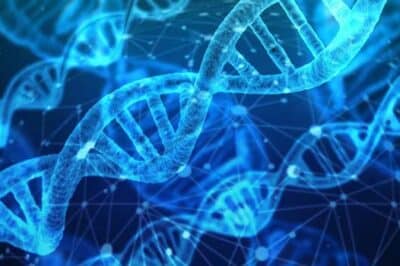
11) William McRae (1878-1952) botanist
William McRae was born in Edinburgh and was schooled locally.
Unfortunately finding online information about McRae is challenging although some sources say he studied science as an undergraduate at the University of Edinburgh.
However, records do show that he worked in India, possibly for the Indian Agricultural Service.
He was the author of a number of books including History of the operations against bud-rot of palms in South India.
He was a member of the Botanical Society of Edinburgh and in 1936 he became a Fellow of the Royal Society of Edinburgh.
►Click on the link at the bottom of the page to access the Royal Society biographical database (part two).
12) Patrick Neill (1776-1851) naturalist
Born in Edinburgh, Patrick Neil seemed initially destined to work as a printer. However, his love of science, botany in particular, took him in a different direction.
He was awarded an honorary LLD from the University of Edinburgh and was the first Secretary of the Caledonian Horticultural Society.
Following the draining of the Nor Loch which divided the Old and New Towns of Edinburgh, Neill was responsible for designing and planting the trees and shrubs that enhance what is now West Princes Street Gardens.
Neil was also a Fellow of the Royal Society of Edinburgh and the author of a number of publications including The Flower, Fruit, and Kitchen Garden.
►Finding further information about Neill is challenging. However, the Royal Society of Edinburgh (link at the end of the page) provides brief details.
13) Eleanor Anne Ormerod (1828-1901) entomologist
Born in Gloucestershire and with limited early educational opportunities, Eleanor Anne Ormerod became the first woman honorary graduate ( Doctor of Laws ) from the University of Edinburgh.
she was also the first woman to become a Fellow of the Royal Meteorological Society.
The Museum of Natural History described her as somebody who played a pivotal role in establishing economic entomology.
[Ormerod]”The protectress of agriculture and the fruits of the earth, a beneficent Demeter of the nineteenth century.”
Universit of Edinburgh (Sir Ludovic Grant)
► Search the University of Edinburgh Alumni (link at the bottom of the page) for more information about Ormerod.
14) Arthur Pillans Laurie (1861-1949) chemist
A specialist in the chemical analysis of paintings, particularly those by Rembrandt, Laurie became Principal of Heriot-Watt College (now University) in Edinburgh.
The Royal Academy lists him as an artist, writer and Professor of Chemistry to the Academy between 1912 and 1936. He was also a member of the British Fascist Movement.
Edinburgh University records show Laurie attending chemistry and laboratory classes. However, while the Royal Society of Edinburgh confirms that he achieved an MA qualification it does not confirm from which university.
► For more about Laurie, click the Royal Society of Edinburgh link at the bottom of this page and search for limited information.
15) Alexander Wood (1817-1884) physician, chemist
Born in Fife, Alexander Wood and his family moved to Edinburgh’s New Town in 1821.
In 1835, he enrolled at the University of Edinburgh to study medicine and arts. He graduated MD seven years later and established a private practice in the city.
Influenced by James Young Simpson’s work on anaesthesia, Wood threw himself into a project which developed the world’s first hypodermic syringe. It was first used to inject a morphine-based solution into an elderly lady suffering from neuralgia.
► Search the National Records of Scotland (link at the bottom of the page) for more information about Wood.
16) John Hope (1725-1786) botanist, physician
John Hope, born in Edinburgh, studied medicine at the University of Glasgow and botany in Paris. He was appointed Professor of Botany and Materia Medica at Edinburgh University in 1761.
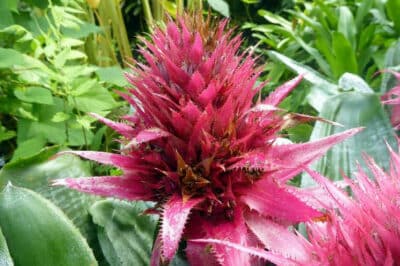
Hope was Regius Keeper of the Royal Botanic Garden Edinburgh between 1761 and 1 786.
During that time he became a Fellow of the College of Physicians in Edinburgh.
► Explore the life of this remarkable man on the official website of the Royal College of Physicians in Edinburgh.
17) William Cullen (1710-1790) Physician
William Cullen, born in Hamilton, qualified MD at the University of Glasgow.
He became the Professor of Chemistry and Medicine at the University of Edinburgh in 1756 and President of the Royal College of Physicians of Edinburgh in 1773.
“Cullen extended the subject of chemistry beyond medicine by connecting it to many arts.”
anon.
►More detailed information about William Cullen in this Truly Edinburgh feature article.
18) Mona Chalmers Watson (1872-1936) physician
Mona Chalmers Watson was born in India and had her early schooling in St Andrews. She gained her MD from the University of Edinburgh, the first woman to do so. She subsequently set up in private practice with her husband in Edinburgh.
In 1917, this remarkable woman, a leading suffragette, became the Chief Controller of the Women’s Army Auxiliary Corps (WAAC). She was awarded a CBE for her work with the WAAC.
►Search the University of Edinburgh Alumni website (link at the bottom of the page) for more information about Watson.
19) John Anderson (1833-1900) zoologist, physician
Born in Edinburgh, John Anderson graduated in medicine from the University of Edinburgh in 1862. The University presented him with a gold medal for his thesis on zoology.
Anderson subsequently spent time travelling and carrying out zoological research throughout Asia and further afield. In 1865, for example, he travelled to India to take up the post of curator at the Indian Museum in Calcutta.
Also an author, his book Zoology of Egypt was well received by other scholars.
Although John Anderson died in England, he was buried in Edinburgh’s Dean Cemetery.
► Finding more information about Anderson online is challenging but the Oxford Dictionary of National Biography is a good place to start.
20) Robert Knox (1791-1862) physician, ethnologist
Robert Knox, born in Edinburgh, became a medical student at the University of Edinburgh.
Following his graduation in 1814, he joined the British Army and was posted to Belgium where he attended the wounded from the Battle of Waterloo.
Back in Scotland, he opened a museum of anatomy and pathology and became a Fellow of the Royal Society of Edinburgh.
Despite his obvious talents as a medical man, Knox will be forever remembered for his links to the murderous Burke and Hare.
► For more information about Dr Robert Knox see the University of Edinburgh Alumni link at the bottom of this page.
21) Norman Dott (1897-)1973) neurosurgeon
Norman Dott was born in Edinburgh and went to school locally. He graduated MB from the University of Edinburgh in 1919.
Fast forwarding a little, Dott became a Professor of Neurosurgery at the University and a Fellow of the Royal College of Surgeons in Edinburgh.
He also spent some time working and training in the United States. In 1962 he became a Freeman of the City of Edinburgh.
► For more information about Norman Dott, see the University of Edinburgh Alumni link at the bottom of this page.
22) Isabella Pringle (1876-1963) physician, medical missionary
Isabella Pringle was born in Edinburgh and graduated MBChB from the University of Edinburgh in 1909. She later left Scotland to work as a medical missionary in Manchuria, China.
Back in Scotland, she helped establish maternity and child welfare services in Paisley.
Her MD was finally awarded in 1921. Less than a decade later this extraordinary woman became the first female Fellow of the Royal College of Physicians of Edinburgh.
“Dr Ella Pringle was one of that devoted group of lady doctors in this country who pioneered and gave their all for the furtherance of maternal and child health.”
anon colleague
►For more about Pringle, click the University of Edinburgh Alumni link at the bottom of this page and search for information.
23) Alexander Murray Drennan (1884-1984) pathologist
Alexander Murray Drennan was born in Glasgow and had his early schooling in that city. He subsequently enrolled at the University of Edinburgh to study medicine. He received his MBChB degreein 1906. A residency at the Royal Infirmary of Edinburgh followed.
In 1914 he moved to New Zealand to take a position at the University of Otago.
As WW1 gathered pace, Drennan served as a pathologist in Greece and took part in the Dardanelles campaign. he later also served in Egypt.
He is best remembered for his pioneering methods of treating wounded soldiers, a technique he developed in Edinburgh.
In 1924, he returned to the University of Edinburgh as the Professor of Pathology. Some years later he was made a Fellow of the Royal Society of Edinburgh.
► For more about Drennan, click the University of Edinburgh Alumni link at the bottom of this page and search for information.
24) Patrick Heron Watson )1832-1907) surgeon
Patrick Watson was born in Edinburgh and schooled locally before enrolling at the University of Edinburgh to study medicine. He graduated with an MD in 1853.
Like many other young men of his generation, he joined the army, as a surgeon, and travelled to Constantinople (Istanbul) before being sent to Crimea.
Moving forward a few years and he was back in Edinburgh as a surgeon at Edinburgh Royal Infirmary. One of his students was Arthur Conan Doyle.
By 1870, as a committed advocate for women, he was encouraging more women to attend his surgery classes. One of the best-known was Sophie Jex-Blake.
Among a number of other positions he was President of the Royal College of Surgeons in Edinburgh.
► For more about Watson click the University of Edinburgh Alumni link at the bottom of this page and search for information.
Edinburgh scientists: formal science
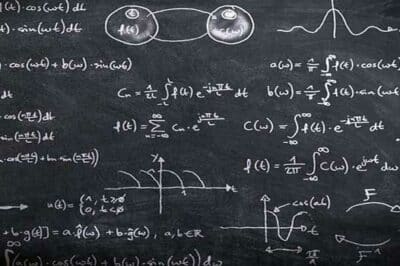
25) Peter Guthrie Tait (1831-1901) mathematical physicist
Peter Guthrie Tait was schooled initially in Dalkeith before moving to Edinburgh Academy and later to the University of Edinburgh, where in 1860 he became the Professor of Natural Philosophy.
Earlier (1854) he held the post of professor of Mathematics at Queens College Belfast.
Tait is best known for his work on thermodynamics and the theory of quaternions.
During his working life, he collaborated with the remarkable Edinburgh scientist James Clerk Maxwell and fellow mathematical physicist William Thomson, Lord Kelvin, who he knew for over 40 years.
Tait and Kelvin worked jointly on the Treatise on Natural Philosophy (1867), a work say the University of Cambridge “that traced the recent concepts and methods emerging from 19th century physics.”
► More information about Peter Guthrie Tait from the University of St Andrews.
26) Charles Hughes terrot (1790-1872) mathematician
Born in India, Charles Hughes Terrot gained a BA with mathematical honours from the University of Cambridge. He moved to Edinburgh in 1817 and was appointed the Bishop of Edinburgh in 1841.
He was elected a fellow of the Royal Society of Edinburgh on the strength of a number of mathematical papers including On the Sums of the Digits of Numbers.
►For more information about Terrot see the Royal Society link at the bottom of this page
27) Colin Maclaurin (1698-1746) mathematician, natural philosopher
Colin MacLaurin initially studied at the University of Glasgow before taking the Chair of Mathematics at Marischal College, Aberdeen. By 1726 he was the Professor of Mathematics at the University of Edinburgh.
He contributed to a book about Isaac Newton, was a founding member of the Royal Society of Edinburgh and in 1745 helped prepare the city against an approaching Jacobite army.
He was buried in Greyfriars Kirkyard.
► Search the National Records of Scotland (link at the bottom of the page) for more information on Colin MacLaurin.
28) James Burnett, Lord Monboddo (1714-1799 ) linguist, philosopher
A student of law at the University of Edinburgh, Monboddo, a prominent scholar of the Scottish Enlightenment, is credited with being the founder of modern comparative historical linguistics.
Following a short time in the Netherlands, he became an advocate in Edinburgh. He found time to write a number of what were considered ‘major works’ including The Origin and Progress of Language, published in six volumes.
He counted several Enlightenment literati among his friends. Philosopher and historian Adam Ferguson was always a welcome visitor at Monboddo’s Edinburgh home.
►Discover more about James Burnett by clicking the University of Edinburgh Alumni link at the bottom of this page and searching for information.
29) John Leslie (1776-1832) mathematician, physicist
John Leslie, born in Largo, Fife, became a student at the University of St Andrews at the tender age of 13. In 1785 he moved to the University of Edinburgh to study divinity. He also took classes in mathematics and science. In addition, Leslie joined philosophy lectures given by Professor Dugald Stewart.
In 1805 he was elected to the Chair of Mathematics at Edinburgh. Some years later he took the Chair of Natural Philosophy.
Leslie is best remembered for his research into the properties of heat.
► This article from the University of St Andrews says more about Leslie.
Edinburgh scientists: social science

30) Patrick Geddes (1854-1932) sociologist, town planner
Although Edinburgh owes much to the work of this remarkable man, his studies and work took him to places around the world. They included Jerusalem, India and Mexico.
“Geddes ideas about town planning and sociology extended to other countries and continents.”
National Library of Scotland (NLS
Although briefly flirting with botany at the University of Edinburgh, Geddes is best known as the man who worked tirelessly to improve the living conditions of Edinburgh’s Old Town citizens.
Today the Patrick Geddes Centre at Riddles Court on the Lawnmarket (Royal Mile) is a reminder of a pioneering social reformer and town planner.
►The National Library of Scotland says more about Patrick Geddes.
31) Marie Stopes (1880-1958) women’s rights campaigner, paleobotanist
Marie Stopes,born in Edinburgh’s New Town, was schooled locally.
Interestingly her mother Charlotte Carmichael Stopes had strong connections to the development of Edinburgh’s architectural history.
After the family moved south, Marie graduated in 1902 from University College London with a degree in science. Later she was awarded a PhD from the Botanical Institute in Munich.
Although trained as a palaeobotanist she was better known as a women’s rights campaigner and as a champion of family planning.
►This article from the Oxford Dictionary of National Biography says more about Marie Stopes.
List of Edinburgh Scientists, further information
Links to further authoratative information
Although not part of this list of Edinburgh scientists the short list below provides some related reading.